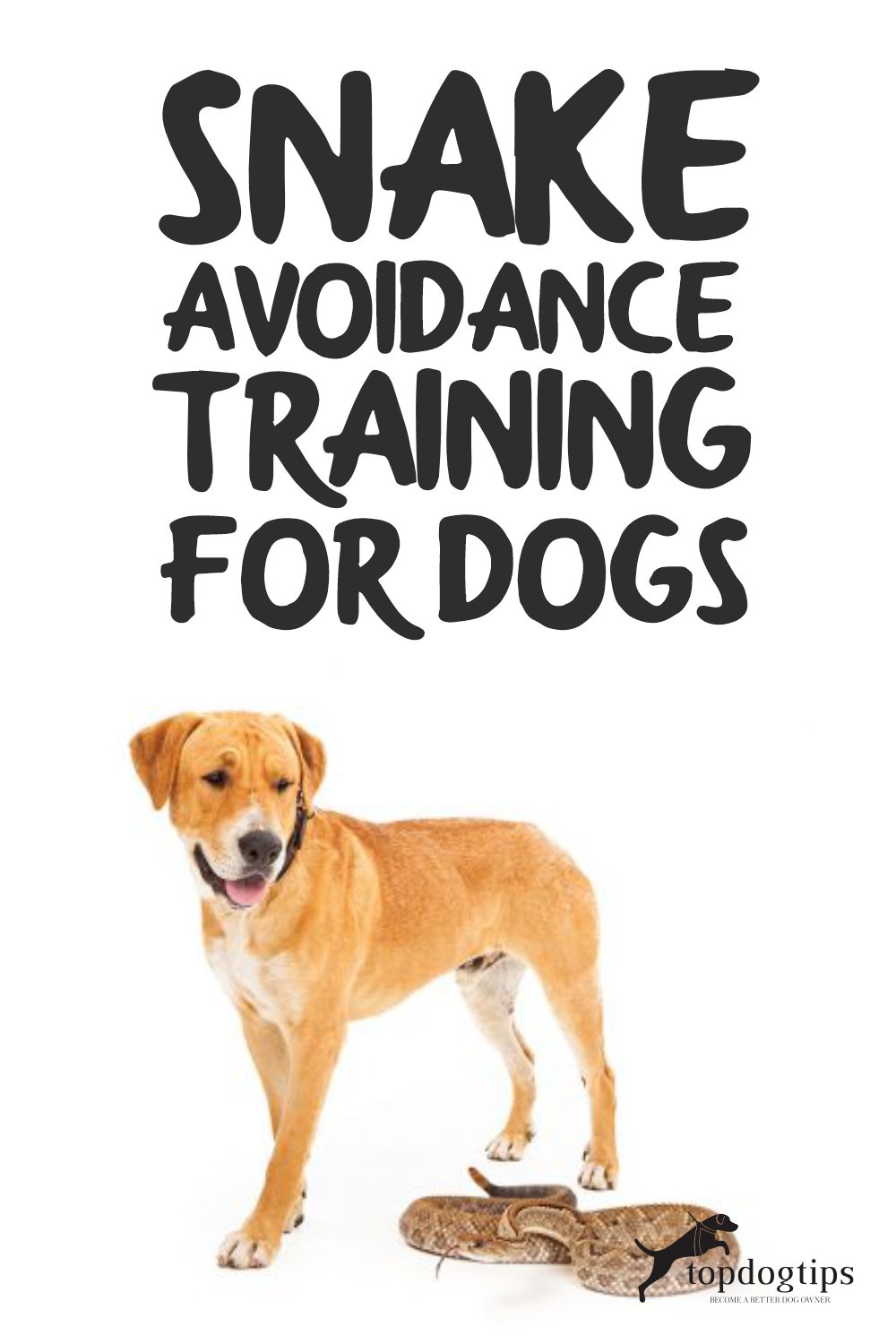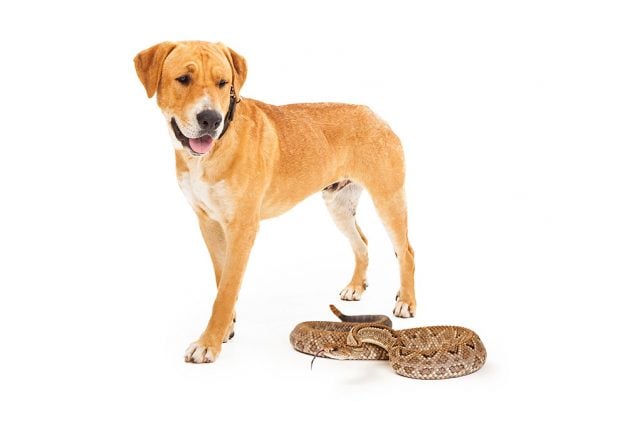
Table of Contents
Dog owners who live in areas with venomous snakes know how dangerous these animals can be to their pets. Snake avoidance training for their dogs is important.
One of the most popular venomous snakes is the rattlesnake.
A rattlesnake is a massive pit viper with a series of rings on its tail. These rings emit a rattling sound to warn their predator or distract their prey.
A single rattlesnake has an extremely potent venom. Once they bite you, it requires immediate medical attention.
Human fatalities are rare. However, that's not the case for our furry friends.
With a dog's natural curiosity, they may inevitably walk down the path of harm unless they undergo training that can help them walk out of a dangerous situation unscathed.
This article will discuss the different sides of snake training and the techniques that come with it. Stay tuned!
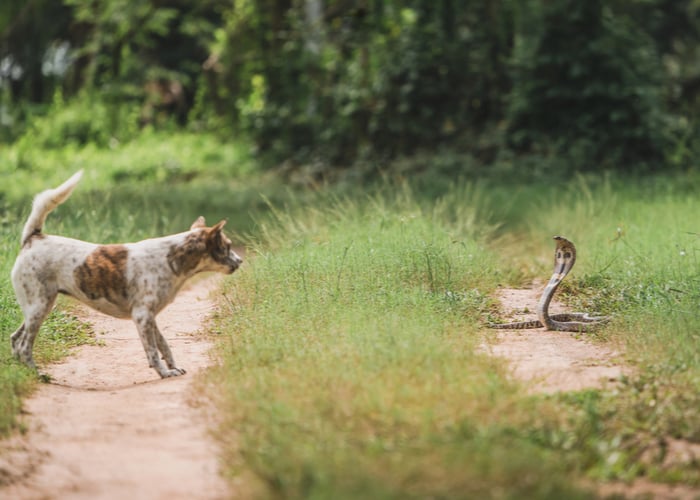
What is Snake Avoidance Training?
Dogs don't instinctively know how to avoid snakes, thus making them easy prey. While rattlesnakes don't bite unprovoked, a dog nosing its way into their private space is good enough to have you running to an emergency animal hospital.
So, how do we prevent it? The only answer to it is snake avoidance training.
Like what the name suggests, snake avoidance training is a series of training that intends to be a preventive measure to teach your dogs how to avoid snakes in general.
In this training, dogs are taught how to identify venomous and non-venomous snakes through their appearance, sound, and smell. They are also trained how to avoid one, especially in situations where their owner is not present.
Below are the training techniques used in snake avoidance training.
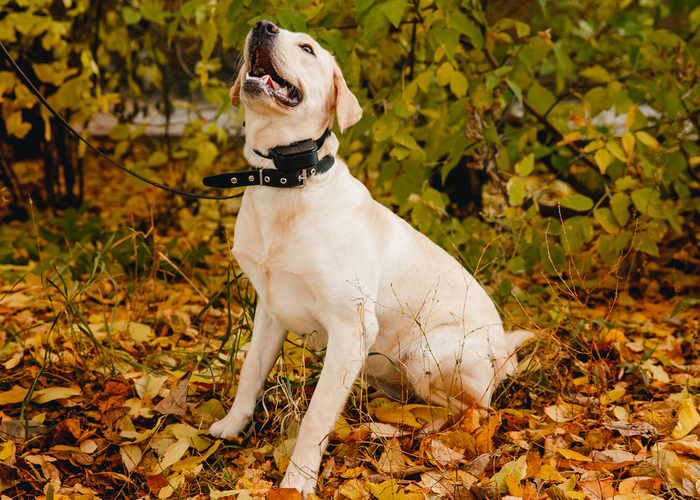
Snake Avoidance Training: The Traditional Method
One of the traditional techniques used to train dogs includes the use of electric collars. This practice is pretty common in America, especially in areas where snakes foster.
As the name implies, this training technique basically uses electric shock collars on dogs.
In this method, dogs receive harsh electric shocks upon exposure to any stimulus similar to a snake. Owners believe that associating pain or discomfort with these stimuli can help the dog avoid snakes in the future.
Although this technique is mainly used by skilled trainers or experienced owners with absolute consistency, timing, and intensity, this type of training can result in severe behavior, and anxiety problems called punishment fallout.
The danger snakes pose tempting for trainers and owners to take extreme precautionary measures in protecting their dogs.
However, the electric collar training method also gives a false sense of security. The only true thing in this training is that you deliberately harm your dog physically and socially.
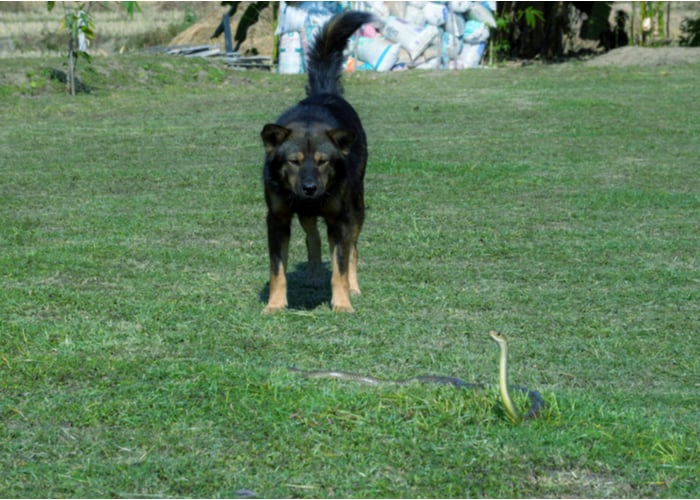
Snake Avoidance Training: The Positive Method
Because of the adverse side effects of the traditional method, several snake avoidance trainers developed an alternative to it which is now called the positive method.
Compared to the traditional method, this training aims to practice your dog recognizing a snake and stay away from it without fear of pain. This includes teaching specific behaviors and skills to conduct through engaging and fun activities (e.g., games).
According to Jamie Robinson, the author of Snake Avoidance without Shock, “If you really want a dog to stay away from something, you have to make it the dog's choice, not just a conditioned response.”
Below are the techniques used in Positive Method Training:
#1: Leave it!
Leave It is an impulse pet control training that teaches your dogs to leave or avoid anything that doesn't belong to them.
First, you must teach your dog to associate “Leave it!” with a thing or a treat that is more beneficial to them.
For example, after leaving a small treat on the ground, you must command your dog to leave the treat and let it stay as it is. If your dog follows you, you must give them an equivalent treat bigger in size and weight.
As you continue to build a stronger foundation of this command, you'll be able to slowly leave the treats and use petting or praises as their rewards instead. You can also start training them through real-life situations like supervised outings and other leisure activities.
This technique is essential to teach your dog what to touch and not touch in their environment.
#2: Autowatch
Another approach that is similar to Leave It is Autowatch.
This technique basically focuses on exposing your dogs to a series of challenging levels (e.g., having another dog in the vicinity). Your dogs must perform this correctly by focusing their eyes on you as their owner despite their distracting environment.
As the training progresses, this will also strengthen the dog's will to perform correctly.
#3: Make the right choice!
Another option you can teach your dog is how to make the right choice.
This method basically teaches the dogs how to walk away from dangerous situations or even avoid encounters with dangerous animals. Even without help from the handler's verbal cue or prompt.
For example, the trainer and the dog will approach a threatening object (e.g., a small fire) at a distance. The distance must be enough for the dog to realize that the thing is posing as a threat.
Subsequently, the trainer will halt in their movements while continuously tugging on the collar of the dog. If the dog willingly disengages itself from the danger, the trainer must give the dog a prize.
This technique will help the dog know that the easiest way out of trouble isn't moving forward or attacking but disengaging from the situation. It is not a quick fix, but it rids the fallout and stresses your dog may feel when practicing the traditional method.
Through this, your dog will learn and understand that they have to run away as soon as they see, smell, or hear a danger (e.g., rattlesnake). The dog learns this without the discomfort and harm brought by shock.
Although the concepts behind these techniques are easy, the real challenge that comes with it is the inability of dogs not to generalize every situation.
Real-World Situations
Dogs acquire their knowledge in particular situations. If one thing differs from their experience with their training to the real world, they will fail to recognize the situation for which the training applies.
Furthermore, there have been no assurances that these techniques will work in all circumstances.
However, it's better to have a precautionary measure to protect your dog rather than doing nothing about it and risk your pet to worse scenarios.
Nevertheless, a dog's responses to snakes may vary. Some will instinctively attack the snakes, but most will try their best to steer away from them. This hope encourages the fact that it is possible for dogs to entirely avoid a snake that they may encounter in the future.
Other Ways to Protect Your Dog from Snakes
Just the thought of encountering a snake is scary enough, but the idea of a snake biting your dog is way more frightening. It is not only costly, but it is also painful and life-threatening.
If your dog can't attend any snake avoidance training, there's no need to worry, for there are other ways you can help your dogs avoid danger.
This is the list of thing you can do to protect your dogs from snakes:
#1: Rattlesnake Vaccine
Once your dog is given a rattlesnake vaccine, its formula will immediately produce antibodies that specifically neutralize the venom of western rattlesnake diamondback. This vaccine is also presumed to be effective against snakes with similar venoms.
This particular vaccine is important since the treatment for snake bites called antivenom can cost between $500 to $1000 for each shot. Furthermore, they need to be taken in multiple doses so that you can fully treat your dog.
This vaccine will not only save your dog's life, but it can also save you money.
Ask your doctor about the excellent rattlesnake vaccine for your dog.
#2: Avoiding Certain Terrains
If you live in a high-risk area, especially when the weather is hot, avoid going to places with dense bushes, rock piles, and tall grass.
Choose wide paths over narrow ones to easily avoid snakes if ever you cross paths with them.
#3: Using Short Leash
Using a short leash when heading off to the wilderness will keep your dogs close by. They'll be easier to tug if ever you encounter snakes.
Furthermore, it is also not advisable to walk your dog without a leash. Aside from the fact that it is not safe for your pet, it can also provoke attacks from other animals, like snakes.
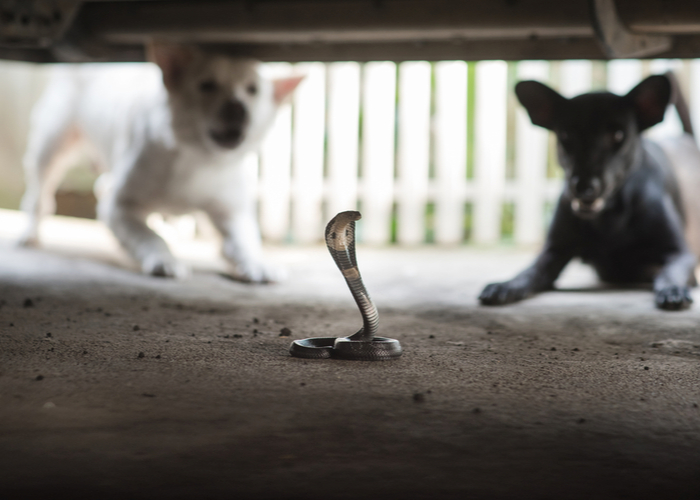
Rattlesnake Bite Symptoms
Unfortunately, there's still a big chance that your dog will fall victim to snake bites, especially when you are out at work or in school.
It's exceptionally harder to see when these bites are covered with your dog's thick coat of fur.
As a responsible owner, it is essential to know the signs or symptoms a dog will show when bitten by a snake, and these are:
- Bite wounds (punctured wounds) that are bleeding.
- Excessive drooling and panting
- Extreme pain
- Restlessness
- Swelling
However, more severe symptoms will show when a high amount of venom is administered to your dog. These symptoms may appear right away or over the course of a couple of hours:
- Your dog will collapse.
- Diarrhea
- Labored breathing
- Lethargy
- Muscle tremors
- Seizures
If any of your dogs show any sign of these symptoms, you must immediately bring them to the nearest veterinary clinic or animal hospital.
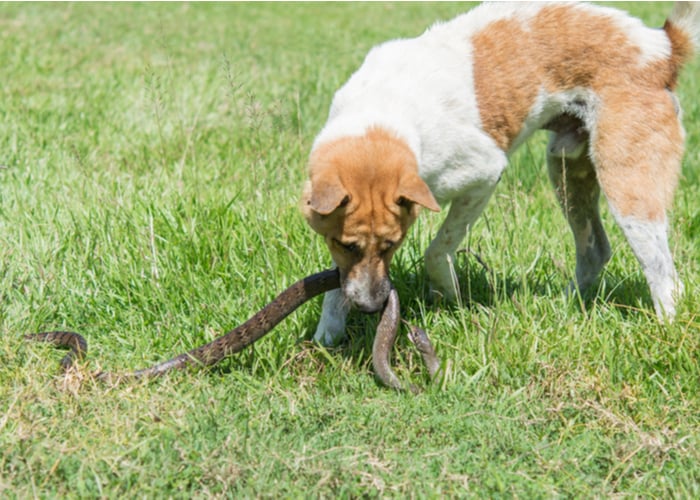
What should you do when your dog has a snake bite?
Despite the training and several safety precautions, what should you do when a snake bit your dog?
Suppose you suspect that a snake bit your dog, call for help at once. Most dogs are saved from the doors of death because of the immediate care given.
Other steps include:
- Letting them drink a Benadryl: Benadryl is a type of antihistamine that helps relieve your dog's allergies. However, this is also extremely important in keeping your dog's airways from closing due to snake bites. It also soothes the swelling area where the snake attacked.
The amount of Benadryl that you will give depends on your dog's size and weight.
- Pressure immobilization: If possible, carefully use a splint or bandage to immobilize the area of swelling. This certain procedure will delay the amount of venom that is being consumed by the body.
- NEVER. Never suck, pee, cut, or tie a tourniquet around the affected area. These methods will only infect the wound further.
You must do some things if ever your dog gets bitten, but we should remember that prevention is always better than cure.
Conclusion on Snake Avoidance Training
If you are to have a dog with you, you need to make good choices about the environment and the living situation you'll bring them in. If it is inevitable to stay in a safe environment, make sure to be sensible, smart, and become a person your dog can trust.
You can also look for people who might help you, and getting a professional assistant might be the right thing for you to do. This way, the training you'll have for your dog will be carried on by someone who knows it best.
There is also a “rattlesnake vaccine” you can ask your veterinarian about just in case you live in an area with many venomous snakes present. It's best to visit the nearest animal clinic right away.
Bear in mind that the use of shock or punishment should never default when it comes to training. It would help if you established the behavioral foundation first before a dog can undergo intense foundation pieces of training.
When the safety of our pets is at stake, we can go to an extent where we turn a blind eye to the things that are supposed to help them, which are actually the ones hurting them.
Choose something that would benefit both of you and not just the other because there are a whole lot more dangerous animals out there and not just rattlesnakes.
READ NEXT: 25 Smart Dog Breeds That are Easy to Train
